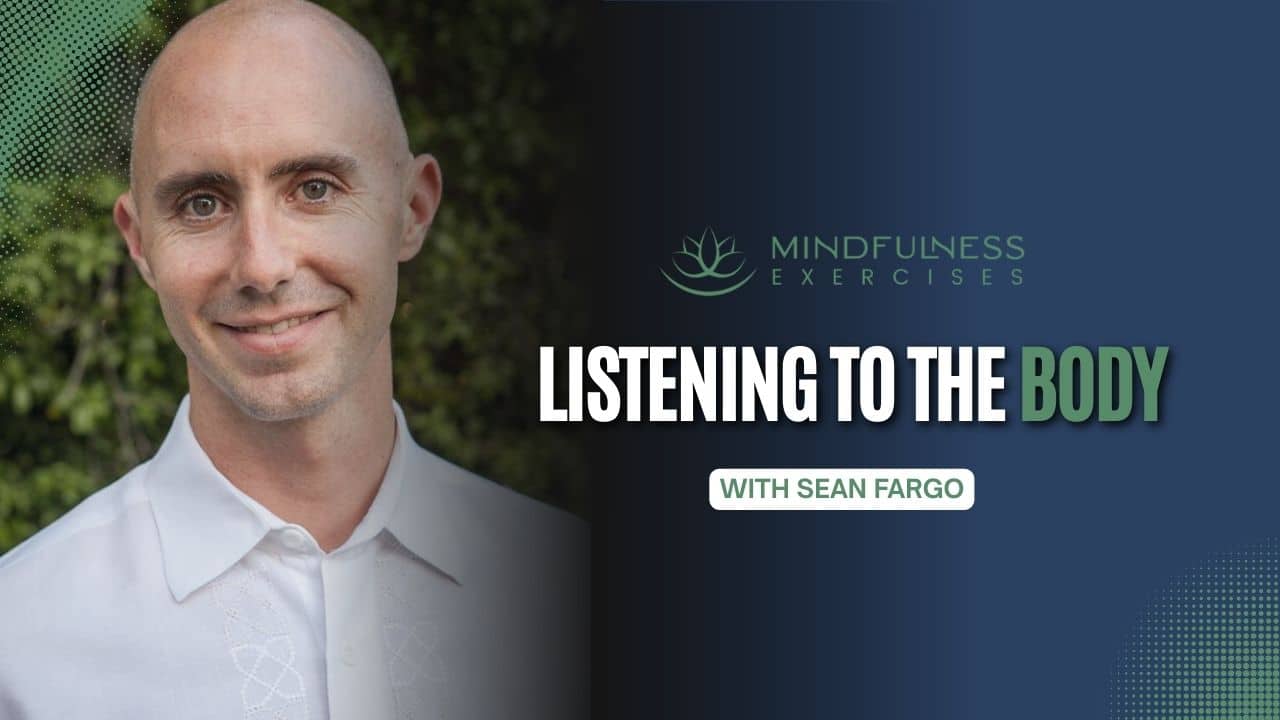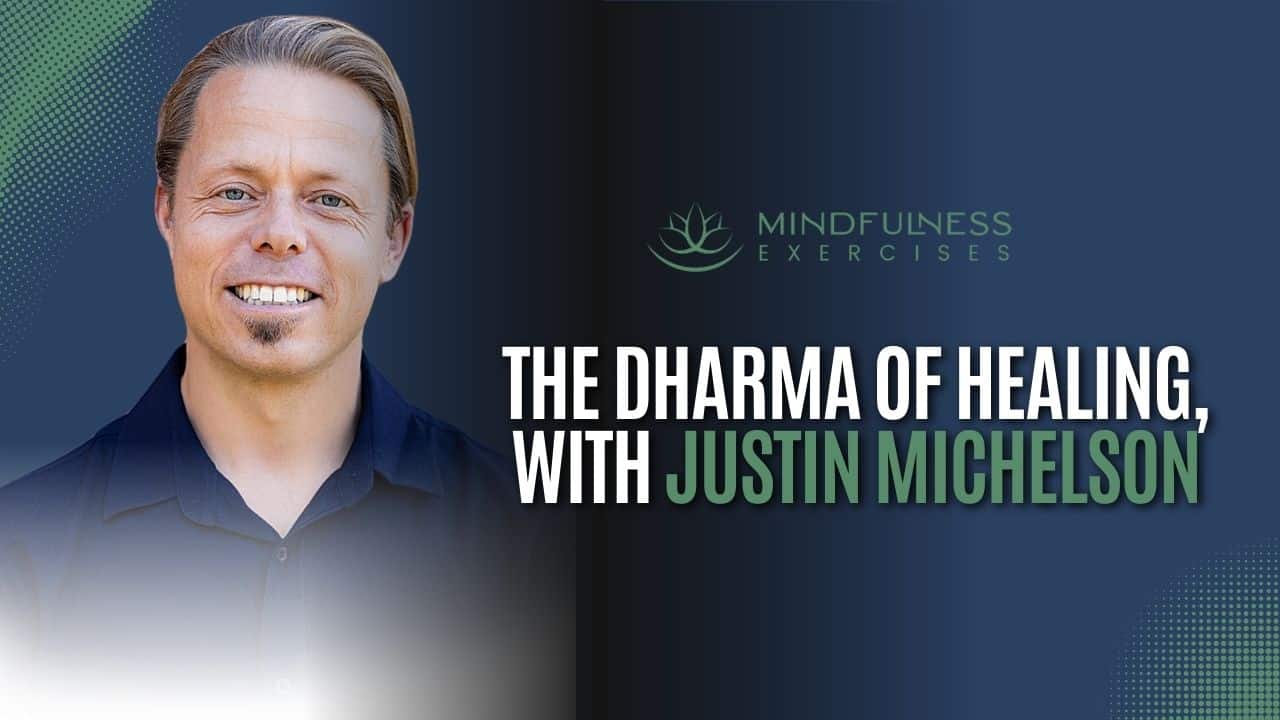Listen now

In this powerful and compassionate episode, Sean Fargo shares how mindfulness can help those living with chronic pain reduce suffering, relate differently to their experience, and begin to heal — emotionally, physically, and spiritually. Drawing from science, clinical collaboration, and his work with trauma and addiction recovery, Sean explains how mindfulness offers a gentle yet transformative path for living with pain. Through presence, softness, and courage, we can reconnect with our bodies and find moments of peace in the midst of discomfort.
Sponsored by our Mindfulness Meditation Teacher Certification Program
MindfulnessExercises.com/Certify
What You’ll Learn in This Episode:
Show Notes:
How mindfulness helps reduce chronic pain and suffering
Mindfulness has been clinically shown to help alleviate chronic pain, not by eliminating it entirely, but by transforming how we relate to it. Sean explains that mindfulness can reduce pain perception by up to 93%, simply by helping people tune into present-moment awareness without resistance. This approach doesn’t replace medication but can reduce reliance on it by minimizing fear, stress, and judgment around the pain.
Why mindfulness works beyond just the physical symptoms
Chronic pain is often linked with emotional and psychological distress, including trauma, addiction, and depression. Mindfulness addresses not only the pain itself but also the secondary suffering — the resistance, stories, and judgments we layer on top of the experience. Sean shares how mindfulness allows us to explore these inner layers with gentleness, revealing paths to healing that go far deeper than the body alone.
The common resistance to being mindful of pain — and how to gently work with it
One of the most common reactions to pain is the desire to escape it. Understandably, many people don’t want to bring awareness to what’s hurting them. Sean emphasizes that this resistance is normal and even wise in some ways. The practice isn’t about forcing ourselves to face pain head-on, but about moving slowly, compassionately, and at our own pace — sometimes beginning with areas of the body that feel safe, then gradually expanding awareness.
How to separate physical sensation from mental interpretation
A crucial part of mindful pain management is learning to distinguish between the raw physical sensations and the thoughts, fears, and judgments about them. Sean explains how most people conflate these two experiences, which can amplify suffering. By noticing the difference, we begin to relate to pain with more spaciousness, seeing it not as something inherently “bad,” but as something we can observe, soften toward, and learn from.
Why softening and compassion are more helpful than trying to "fix"
Instead of striving to fix or get rid of pain, mindfulness invites us to soften — to bring warmth and curiosity to the experience. Sean offers phrases like “just for now” and “soften” as gentle mantras to help ease the nervous system. This softening reduces the tension and fear that often exacerbate pain, creating more ease, even in the presence of discomfort.
The importance of baby steps in building tolerance and presence
Mindfulness for chronic pain is not a quick fix — and it’s not supposed to be. Sean reminds us that real healing happens gradually, through tiny moments of presence, courage, and compassion. Whether it’s breathing into one part of the body for a few seconds or simply acknowledging a judgment without pushing it away, each small step builds the capacity to stay with pain without being overwhelmed.
How community and connection support the healing journey
Living with chronic pain can feel isolating, but it doesn’t have to be. Sean emphasizes the importance of community in healing — the need to feel seen, heard, and supported by others who understand. Mindfulness teaches us that we are not alone in our suffering, and by reconnecting with ourselves and each other, we begin to reclaim our humanity beyond the pain.



